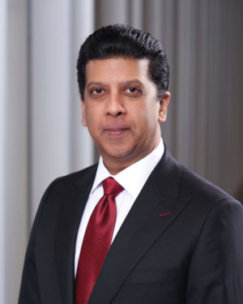April 13, 2022:
When I was recruited to Ohio State in 2009 as director of the Department of Radiation Oncology, one of our long-term goals was to extend our therapeutic reach by establishing central Ohio’s first proton therapy center in partnership with nearby Nationwide Children’s Hospital.
The center would enable both adult and pediatric patients to receive the very latest radiotherapy – namely proton therapy – in one facility that is closer to their homes, making it a less disruptive life experience. Proton therapy uses protons, or positively charged particles found within atoms, instead of X-rays to kill cancer cells. Because it more precisely targets tumor cells, it limits radiation exposure and potential damage to surrounding tissue and organs, reducing the chance of short- and long-term side effects. This is especially important for pediatric patients, whose bodies are still developing.
Over the years we’ve made steady progress toward our goal, and now we are on the verge of opening a state-of-the-art proton therapy center that will be the first treatment center in the United States built with a dual-capability system that can deliver both conventional proton therapy and an even newer and more keenly targeted technology called FLASH. Although FLASH is not yet approved by the U.S. Food and Drug Administration, data from preclinical models have shown that this remarkable therapy could reduce a typical weeks-long treatment regimen to a single treatment delivered in less than a second.
Our proton therapy center will be housed in a nine-story outpatient cancer care facility that is under construction on Ohio State’s west campus and is on track to open in 2023. FLASH therapy likely will not yet be approved by then, but our researchers will continue to study the safety and efficacy of this new radiotherapy in anticipation of its eventual use in our facility.
FLASH holds immense promise not only for more effective cancer treatment but also for expanding access to patients who may be unable to shoulder the burden of repeated hospital visits. If we can get to the point where we can treat patients in less than a second, and requiring one visit instead of 30 or 40, we can greatly increase access to cancer care. This would be the latest radiation therapy available anywhere – something of a quantum leap forward in the realm of targeted cancer care.
We didn’t get to this point overnight. When I arrived, the department was young but offered unparalleled opportunity for our team to build a world-class radiation oncology department from the ground up. Our efforts gained momentum almost immediately when, in 2010, Ohio State was the recipient of a highly competitive $100 million Affordable Care Act grant. The award funded the addition of a floor dedicated to radiation oncology in our new Arthur G. James Cancer Hospital and Richard J. Solove Research Institute, which would open in 2014 to replace the original James that was established in 1990.
Since then, our department has grown from just a few physicians to about 10 times that size and provides services to hundreds of patients a day. Our growth into one of the nation’s largest radiation oncology centers has captured worldwide attention. In March 2021, we hosted President Joe Biden for a tour, an event that marked both the 11-year anniversary of the signing of the Affordable Care Act and the first time a sitting U.S. president had visited the Ohio State Wexner Medical Center or The Ohio State University Comprehensive Cancer – James Cancer Hospital and Solove Research Institute (OSUCCC – James).
Noting that over the past dozen years our radiation oncology department had gone from treating 60 to 70 patients a day to nearly 300 a day, the president called the OSUCCC – James “a source of hope” that continues to break ground in the global effort to eradicate or better control cancer.
This is an exciting time for us at Ohio State and for people everywhere who will benefit from ever-evolving therapies that are changing the landscape of cancer care. Everything is before us. The impact that proton therapy and FLASH will have on the health and well-being of people in central Ohio and beyond will be monumental.
Arnab Chakravarti, MD, is professor and chair of the Department of Radiation Oncology at The Ohio State University College of Medicine. He also holds the Klotz Chair in Cancer Research and is in the Translational Therapeutics Program at Ohio State’s Comprehensive Cancer Center.
About the Big Ten Cancer Research Consortium: The Big Ten Cancer Research Consortium was created in 2013 to transform the conduct of cancer research through collaborative, hypothesis-driven, highly translational oncology trials that leverage the scientific and clinical expertise of Big Ten universities. The goal of the Big Ten Cancer Research Consortium is to create a unique team-research culture to drive science rapidly from ideas to new approaches to cancer treatment. Within this innovative environment, today’s research leaders collaborate with and mentor the research leaders of tomorrow with the unified goal of improving the lives of all patients with cancer.
About the Big Ten Conference: The Big Ten Conference is an association of world-class universities whose member institutions share a common mission of research, graduate, professional and undergraduate teaching and public service. Founded in 1896, the Big Ten has sustained a comprehensive set of shared practices and policies that enforce the priority of academics in the lives of students competing in intercollegiate athletics and emphasize the values of integrity, fairness and competitiveness. The broad-based programs of the 14 Big Ten institutions will provide over $200 million in direct financial support to more than 9,800 students for more than 11,000 participation opportunities on 350 teams in 42 different sports. The Big Ten sponsors 28 official conference sports, 14 for men and 14 for women, including the addition of men’s ice hockey and men’s and women’s lacrosse since 2013. For more information, visit www.bigten.org















Subscribe to the Big Ten CRC Newsletter X
X Facebook
Facebook YouTube
YouTube